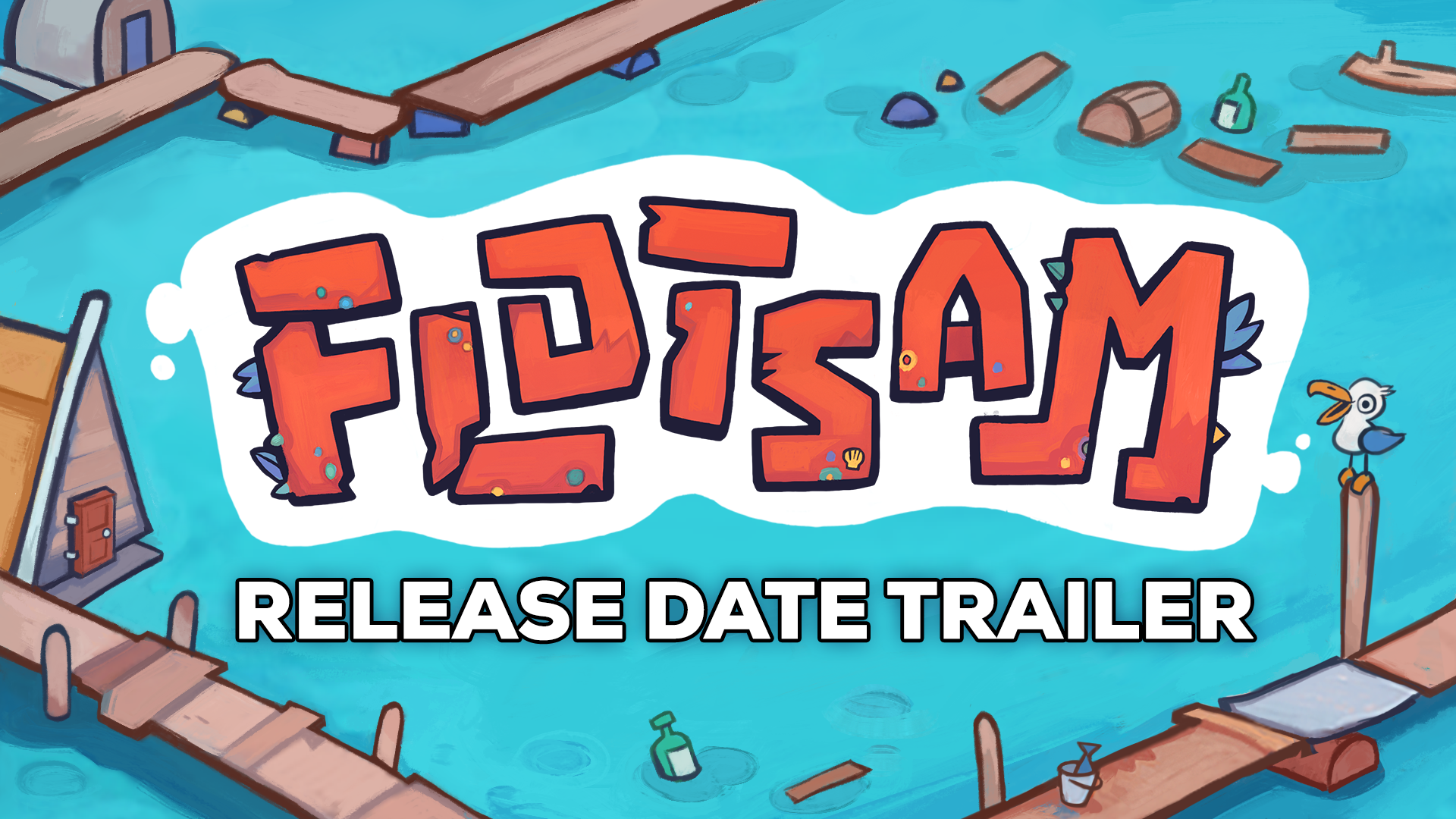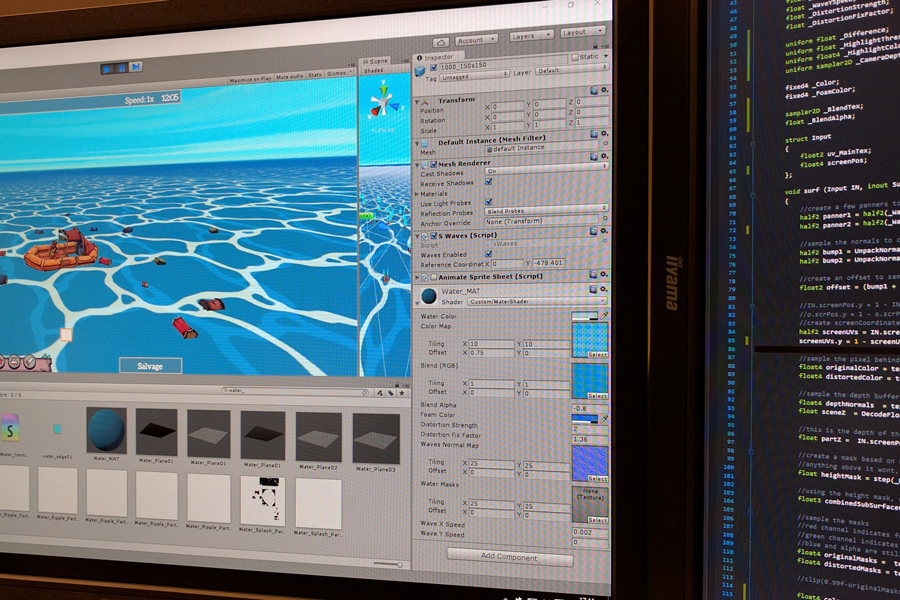Designing sea creatures part 2:

Designing doesn’t always go smoothly. There are many brick walls, times you’d hit your head against the wall and moments where you keep telling yourself to rework everything. For the friendly, regular fish in Flotsam, I’ve gone through every one of these phases.
These fish don’t affect gameplay as much as other aspects of the game, but they provide a valuable visual addition, as they’re one of the main moving environmental features that tie the mood together. Here’s how I designed a small part of the living environment of Flotsam.
The first sketches
When we started Flotsam, we explored a lot of different styles, in search of the perfect aesthetic. Every illustration or sketch had to capture the essence of the world we wanted to portray. Putting what we had in our minds to paper took a lot of exploration to get just right. While our priorities lied with the core components of the game, like buildings and characters, fish occasionally found their way into the brainstorming process.
I started off with a basic mood-board of regular and exotic fish familiar to everyone. I then iterated upon these designs over and over, refining them as I went. I hoped to find a fish that fit all the ideas I had about what feelings Flotsam should convey.

first, more realistic sketches
The first sketches I made were very realistic, but they quickly felt too bland: nothing about them was memorable. This was the first layer of exploration I had to get out of the way before eventually finding more interesting aesthetics. I played with the anatomy, enlarging the eyes and simplifying the body shapes, playing dress up with different kinds of fins. I mixed and matched other animal and insect parts to create fun concepts, like this guy below who’s head is inspired by a beetle’s shell.
Unfortunately, nothing good stood out: these fish just didn’t speak to me the way I had hoped. I still wasn’t happy with the style, and decided to explore it further, but for now I moved back to concepting more pressing parts we needed for the prototype.
In between
While working on the first prototype, inspiration suddenly stuck me with a pleasant fish design. Since the human characters for the game were starting to take shape, this carried over to the fish as well. A small unrelated inktober sketch gave me some ideas, and finished character concepts involving fishing gave me others, but the most consolidating moment of all, was when I was busy designing the huge whales. After a couple of more sketches I was set: I knew what the fish were gonna look like.

in-between development some new fish designs sprouted
The whales and how they sparked an idea
As with fish, I tried combining some of the whales with other animals, which gave birth to odd but interesting combinations. As well as adding large fins and tusks to see how far I could push the quirkiness. Some of these we truly liked: the dog-whale seemed like an interesting concept to take further, and was received positively when we initially showed it.

Whale concepts
But it’s only when I drew the whale that got stuck in a subway car and grew within it, that an idea dawned upon me. To fully maximize the effect of Flotsam’s over-arching theme, we need the wildlife to live in symbiosis with the garbage. As it’s not only important to human survival but marine fauna as well.
The friendly fish of Flotsam
The time finally came to sit down and get back to designing the friendly fish once again. The idea had sprung, the base was set: now all I had to do was put it on paper. After a couple of odd tries, I finally cracked what we wanted to achieve with the small friendly wildlife that will entertain the water. Here’s some of the sketches:
The roadblocks we came across here were mainly focused on readability, as we don’t want the player to be distracted by small fish, but still incorporate trash and garbage in the design. The next step is going to be making 3D models based on these sketches, and iterating on them once again to solve the problems that will inevitably arise from the switch to three dimensions. I honestly can’t wait to see these guys swim!
On the gameplay side this decision had effects as well: now it makes sense to receive small amounts of trash from catching fish. This will also allow us to balance survival and building subtly, for example by reducing the amount of food a particularly contaminated fish gives. It also helps to blur the lines between various resource types, like food and scrap.
We’ll have to see where this approach takes us, but here are some sketches that explore the possibilities for modularity within the fish models. The fact that all these different heads have parts covering the neck area, means they are more easily applicable to other bodies. Without having to worry about ugly seams or problems with smoothing groups/UV’s.
Wrap up
Fish are not the only creatures that will receive this treatment of integration with their environment: I have many ideas on how to apply this principle of merging with garbage and waste in other marine beings. In the world of Flotsam, now that the environment has become unfruitful, new and unexpected symbiosis will emerge between water creatures and their surroundings that I can’t wait to share with you all! Stay tuned for more and thanks for reading!











Love the art here, just felt like I need to show some love